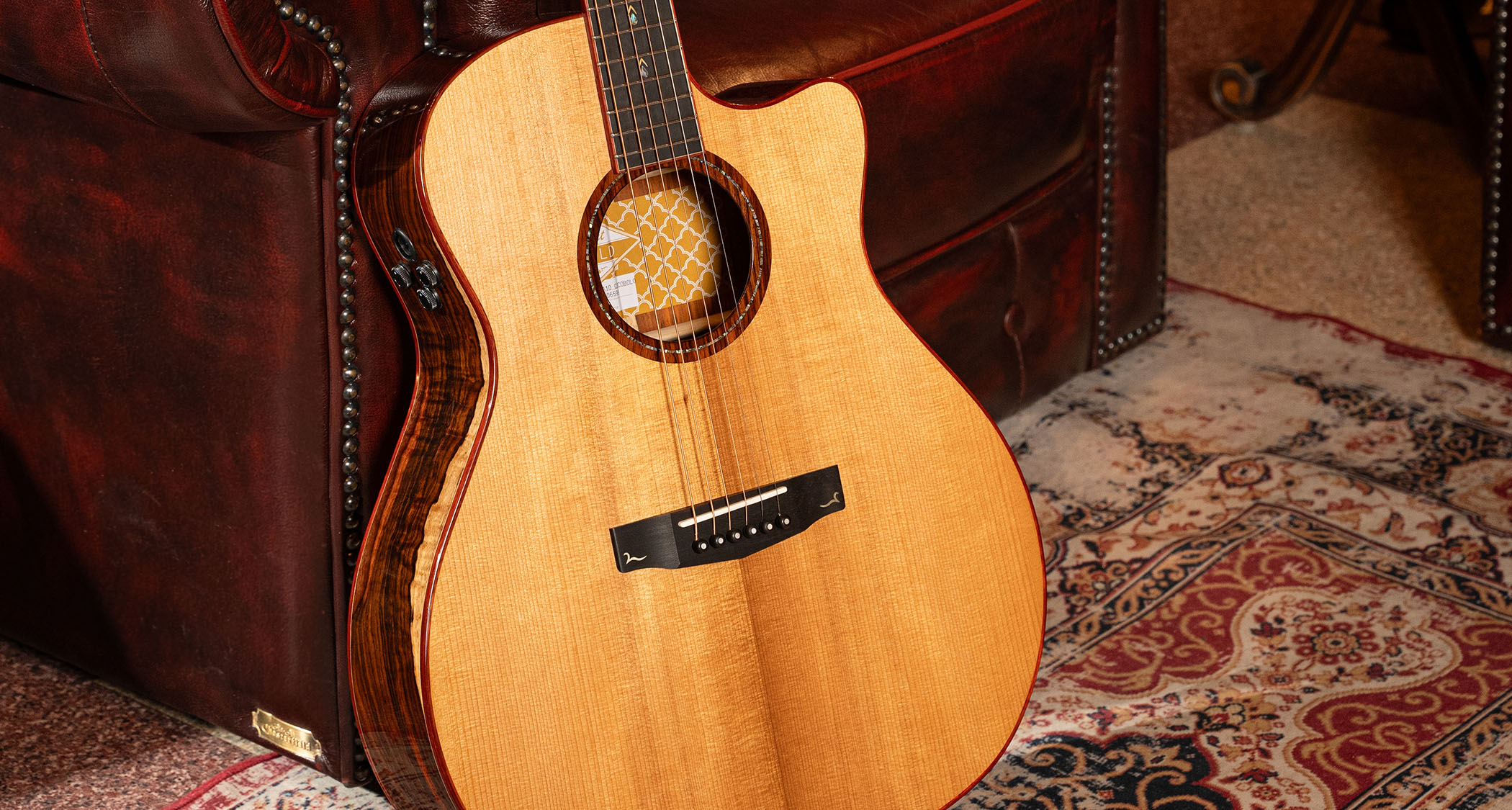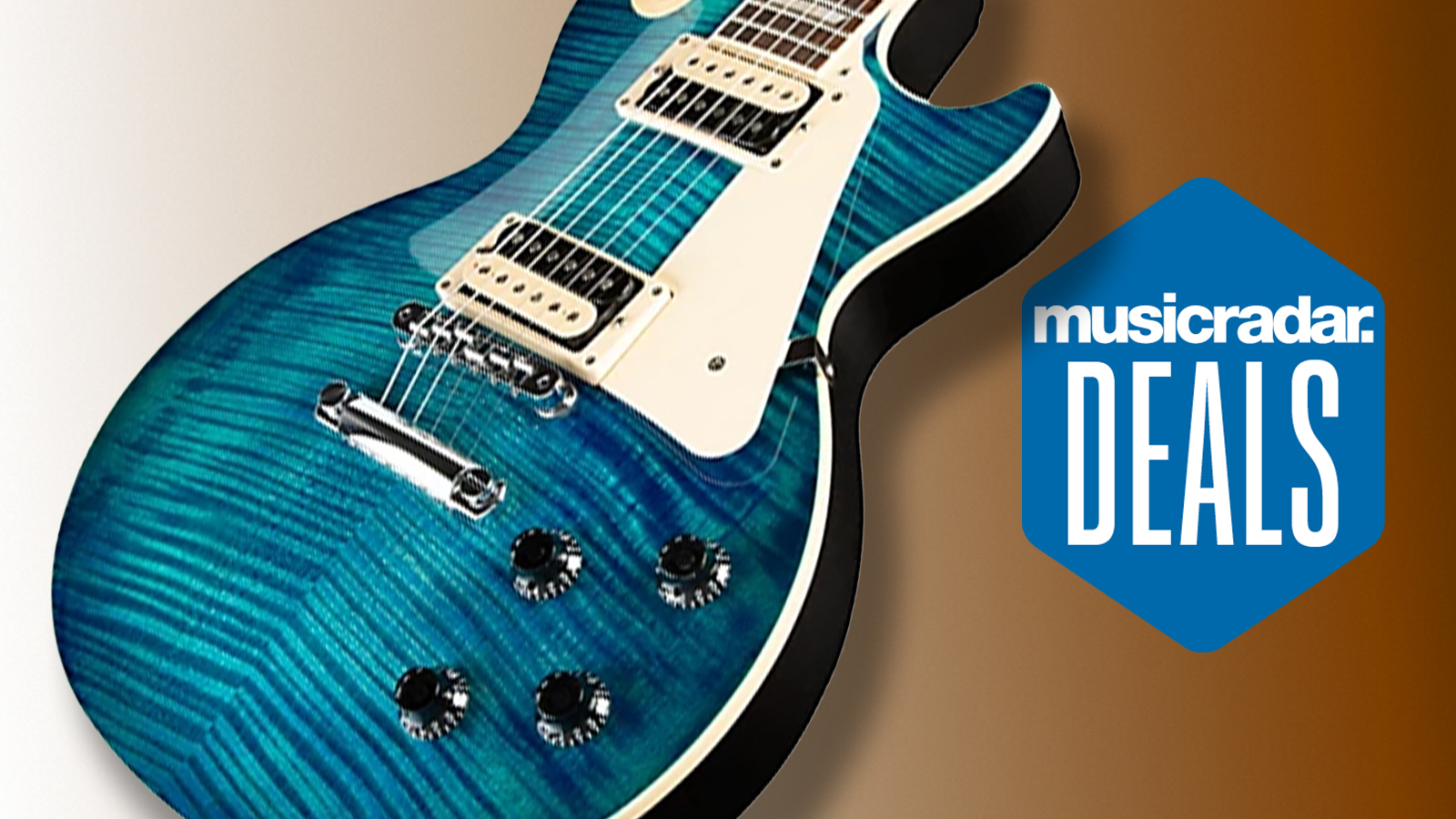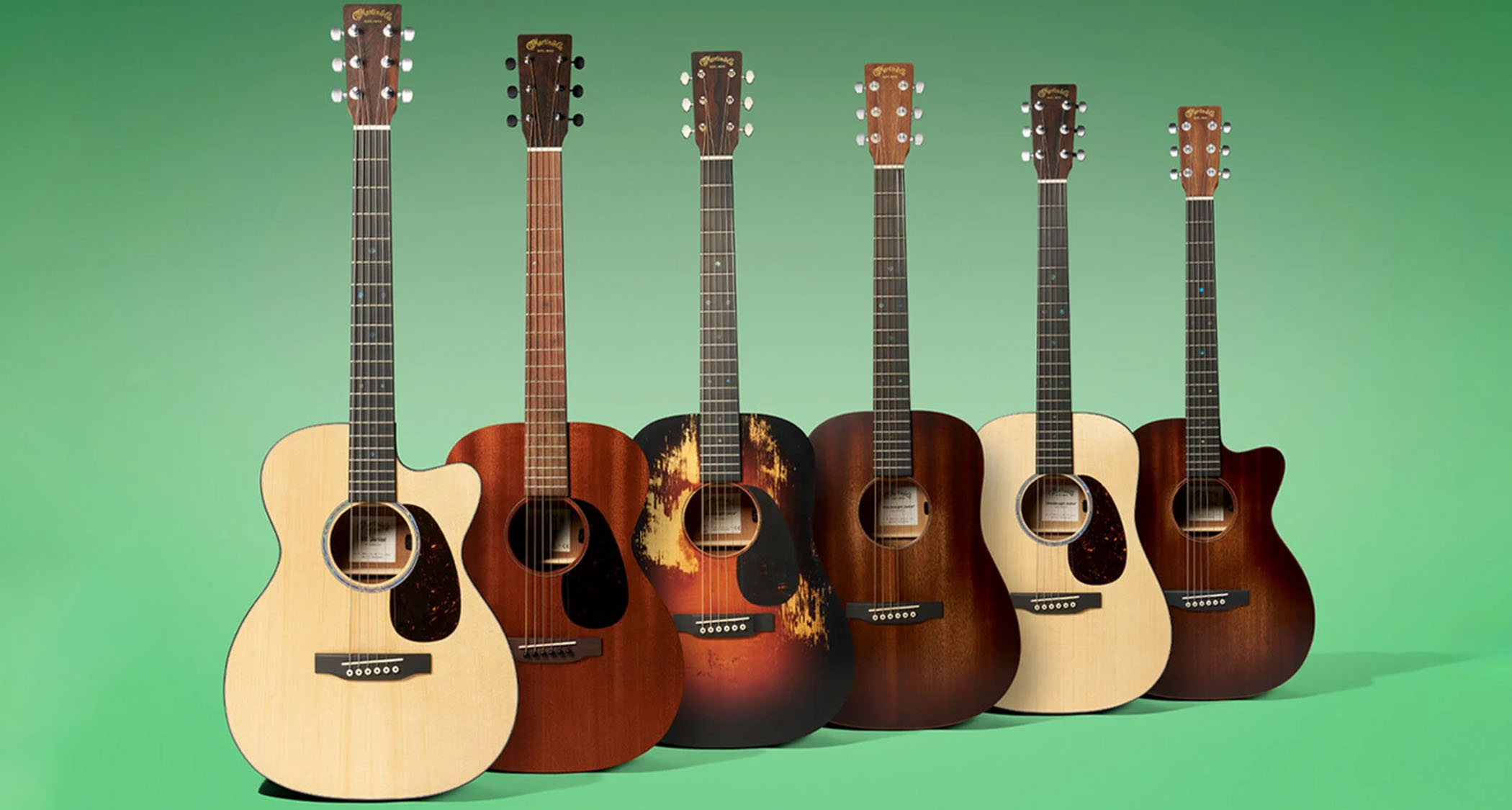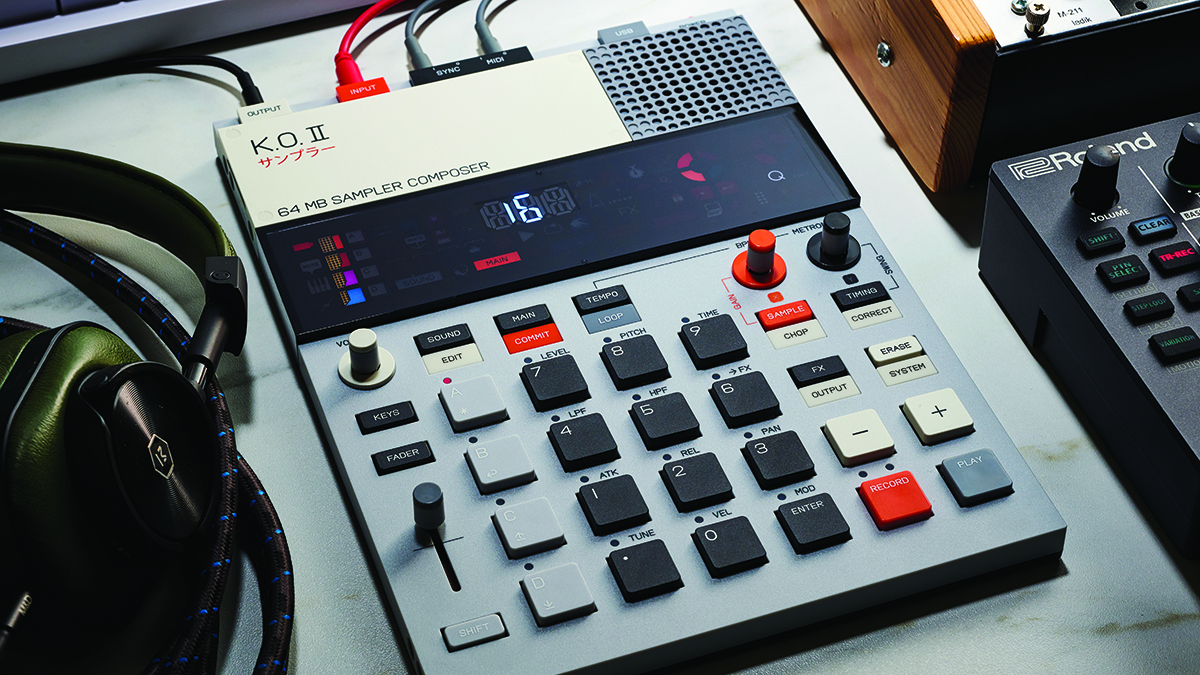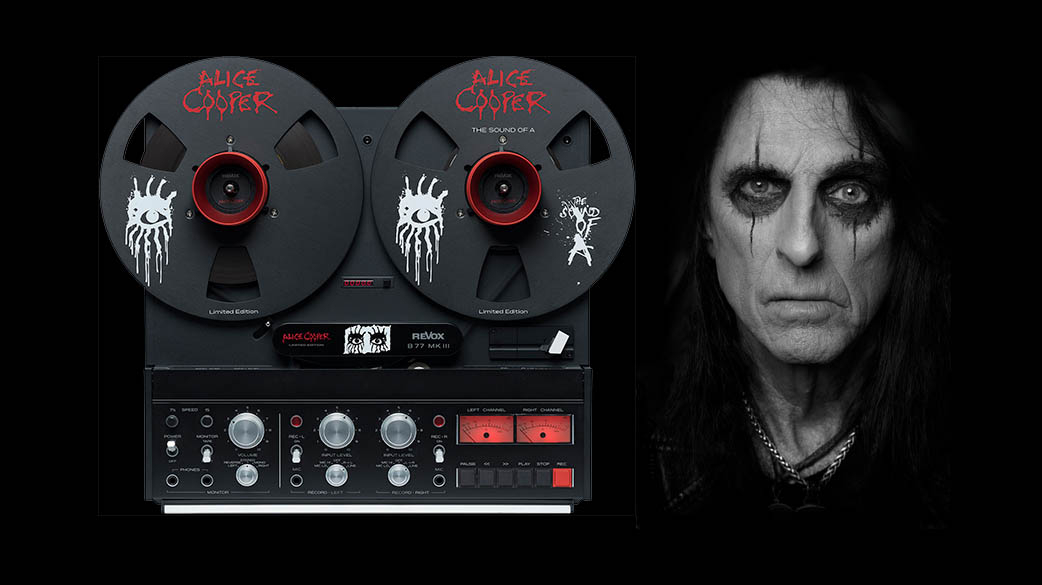The surprising history of the Fender Telecaster
In-depth on the birth of the first - and just maybe the greatest - solidbody electric guitar
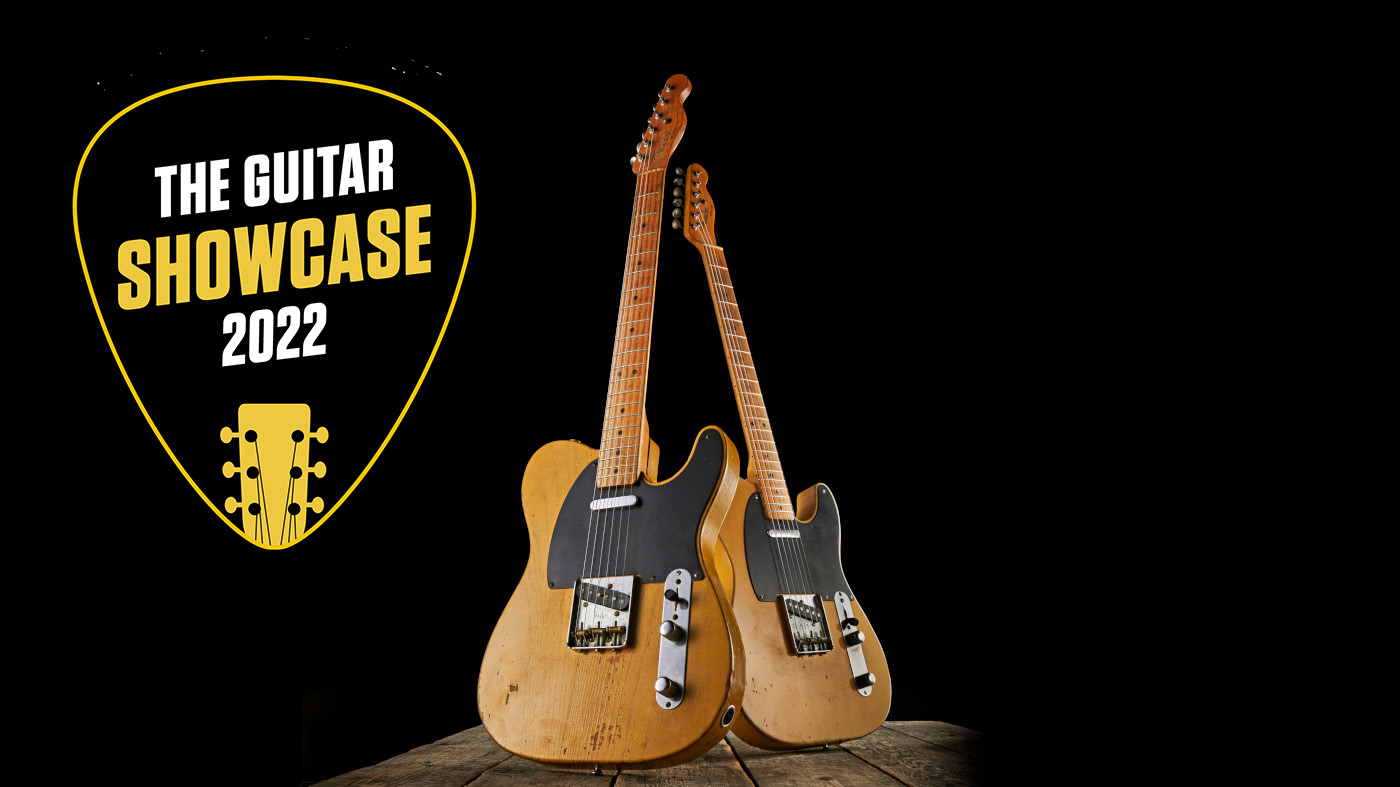
GUITAR SHOWCASE 2022: Few designs evolve from prototype to showroom floor in just a couple of years and then go on to remain relevant - and, in their essence, unchanged - for the next 70 years.
Here, for the Guitar Showcase 2022, we pay tribute to the first, and just maybe the greatest, solidbody electric guitar: the Fender Telecaster. Join us as we trace its evolution from single-pickup esquire ancestry to the latest acoustasonic incarnation of this ageless electric...
The year is 1949. The Second World War had ended just four years previously but already a shining new technological age was beckoning. Jets streaked across the California skies - and down on terra firma, in Fullerton, California, Leo Fender was building the first prototypes of a guitar that would propel six-string design into the wide blue yonder. These early testbed instruments were blocky, even crude looking.
Even the name of this jet-age instrument was a kind of prototype back in ’49. Leo planned to call it the Esquire
The body materials, pickups and control layout were experimental. But they had one pioneering feature that set them apart from every other guitar then available: a solid body.
Even the name of this jet-age instrument was a kind of prototype back in ’49. Leo planned to call it the Esquire, but - as we shall see - the guitar would gain a pickup and change names twice before it assumed the historic moniker that became famous for the next seven decades: Telecaster.
One man who has researched the early evolution of Leo’s first electric guitar in forensic detail is David Davidson, a hugely experienced vintage guitar trader and curator of the Songbirds Guitar Museum in Chattanooga, Tennessee.
He says that the solidbody concept was born of Leo Fender’s practical outlook and desire to carve out a niche for himself in a guitar market that was still dominated by the old guard of tradition-steeped American guitar makers such as Gibson and Martin.
Get the MusicRadar Newsletter
Want all the hottest music and gear news, reviews, deals, features and more, direct to your inbox? Sign up here.
“Leo had been thinking for a period of time about coming up with an inexpensive alternative to the very expensive Gibson and Gretsch models,” David says. “He was laughed at when he came out with a solidbody instrument. Mostly because people thought, ‘How could that possibly sound good?’ But he was a pretty diligent guy who just kept on trying to perfect it.”
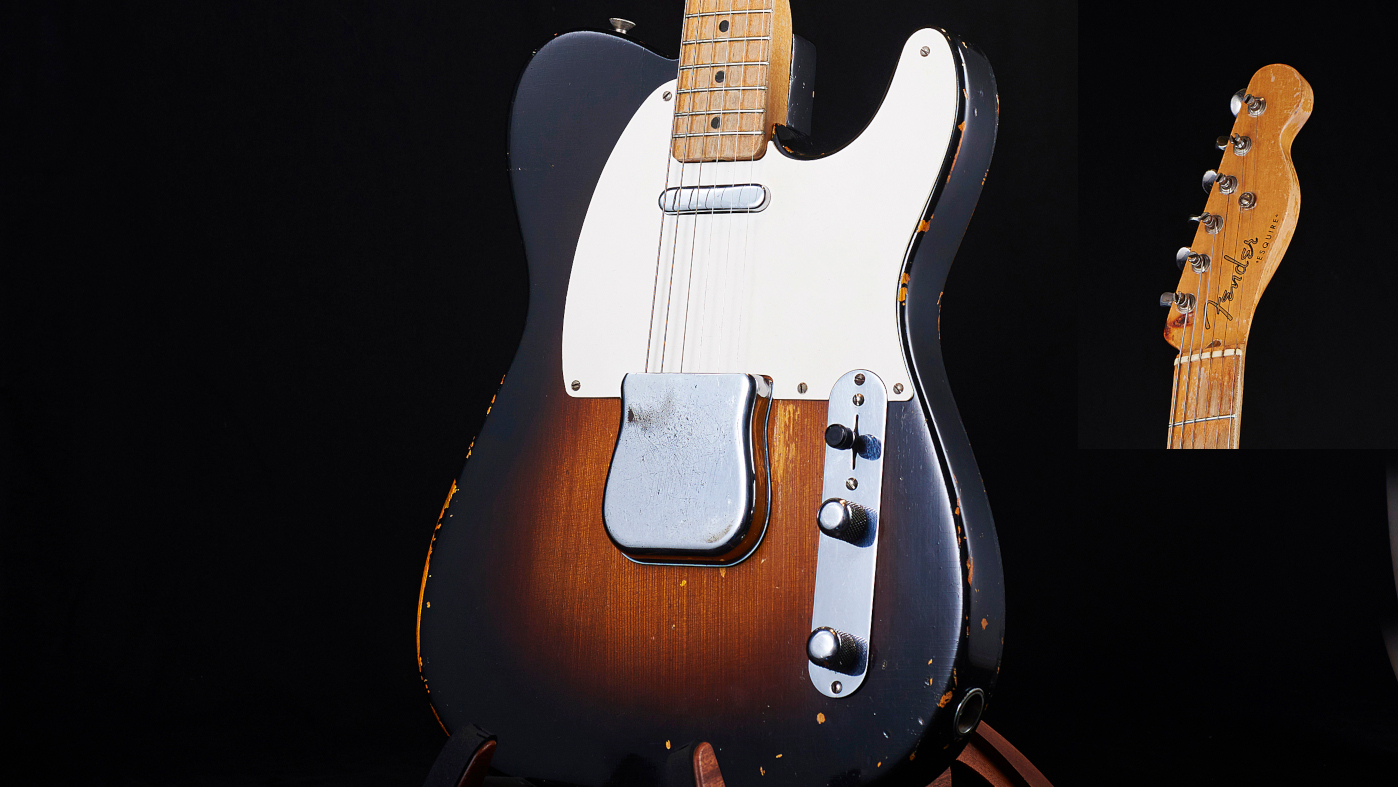
Testing times
Even in 1949, Fender had a few successes under his belt that suggested a solidbody electric might be the way forward. He’d launched a range of wooden-cabinet valve amplifiers including the Princeton, Deluxe and Professional the year after the war ended. These were designed for the electric lap-steel players of the era’s country bands. He’d also built a twin-neck steel guitar for Noel Boggs of Bob Wills’ Texas Playboys Western swing band - a huge act that played to 10,000 people every week.
He would use everybody, from Rex Gallion to Bill Carson and other local players, to go out and experiment with these guitars
This had a slab-like horizontal body supported by legs, like a table. But despite its dissimilarity to a conventional guitar, it - and the range of multi-neck electric Fender lap steels that followed - offered compelling evidence that stringed solidbody electric instruments not only worked but sounded great and were well-liked by the musicians who used them.
Crucially, Leo’s clients on the country music scene provided a ready-made focus group helping him to design and refine his next and boldest innovation - a conventional ‘Spanish’ guitar with a solid body that made use of the lap-steel technology he’d been perfecting since 1946.
“He used his core group of local talent players to bounce instruments off,” David Davidson explains. “He experimented with parts that were basically lap-steel parts in the beginning: pickups and such. And he experimented with different types of wood, primarily pine. He also experimented with chambered bodies and solid bodies to try and find the right combination.
"He would use everybody, from Rex Gallion to Bill Carson and other local players, to go out and experiment with these guitars. Sometimes he’d gift those guitars onto those people; sometimes he’d modify them many, many times over and hand them back out again to be used, until he could come up with what he thought was the perfect formula.
“The guitar takes shape in drawings in 1948, and becomes a guitar, a working specimen, in 1949. It would be hard for me to nail down a date and, in fact, you can only date [the earliest prototypes] by pot dates; they weren’t putting neck dates on these guitars yet.
"The earliest pot date I have is a late-1948 one, but I’m sure the guitar itself was put together in 1949. We really don’t know exactly when, because there are no other markings inside these guitars. They weren’t up to that level of production.”
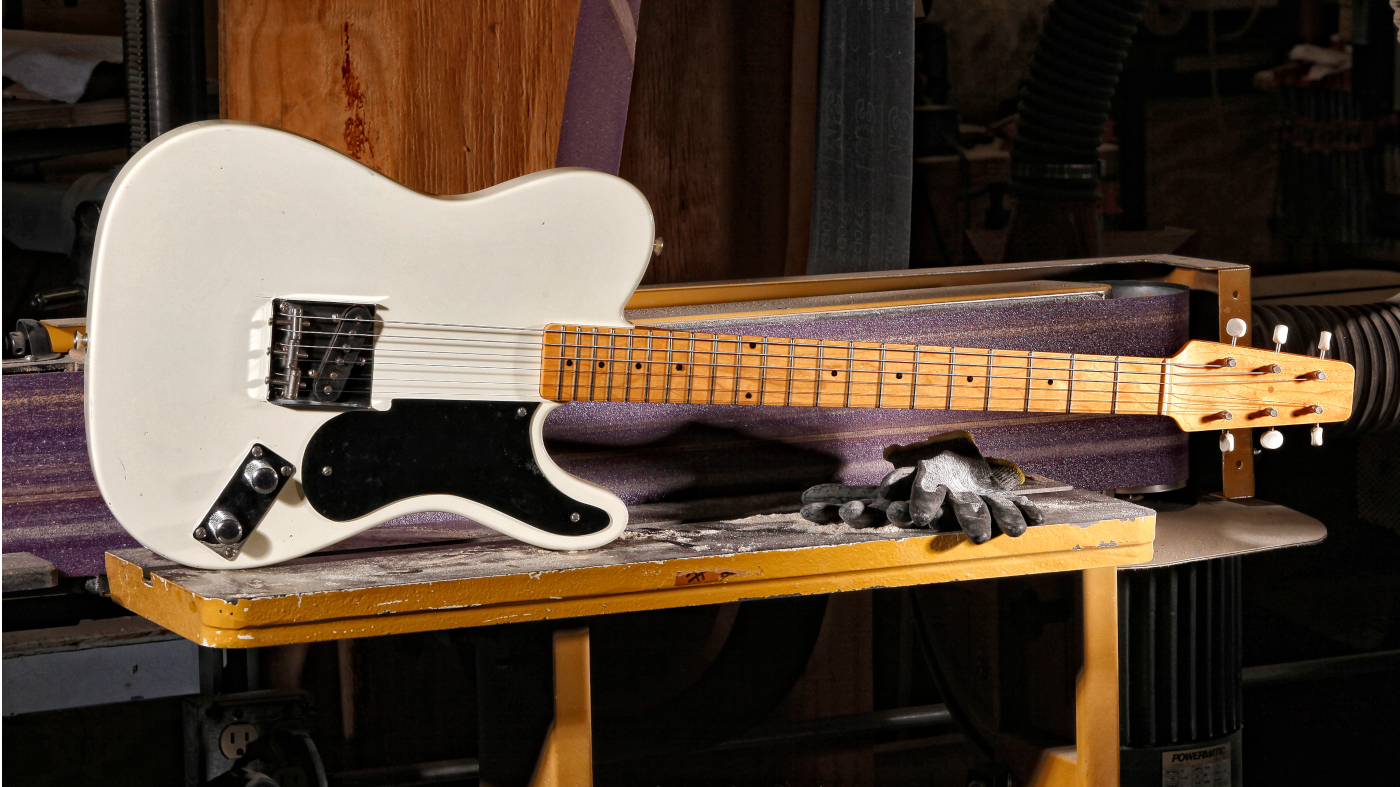
Early evolution
The early prototypes of what Leo initially dubbed the Esquire had a single pickup and these experimental builds tell a story of a guitar that evolved quickly from a rather crude initial design. As successive versions were built, the nascent ‘Esquire’ soon acquired hallmarks of Telecaster design DNA that we can recognise today.
“There’s kind of an evolution that takes place, from the so-called ‘Snake Head’ guitar, which everyone’s fairly familiar with, that had three tuners on each side of the headstock and a small pickguard. And that guitar was joined by a couple of cousins that have six-tuners-to-a-side headstocks.
An early iteration, the so-called ‘Snake Head’ guitar had three tuners on each side of the headstock and a small pickguard
“There is one that is stripped down to its original finish, pine, and then there was one with a pine body, six-on-a-side headstock, small pickguard, controls perpendicular to the neck... and that guitar is white. The original finish was an opaque white finish. The translucent blonde came later, after experimenting with different things.”
As well as the basic outline of the guitar, the electronics and switching system was also revised several times as the guitar, still named the Esquire, neared readiness.
“At the museum we acquired the actual Esquire that appeared in the catalogue, which Leo shot himself. He was kind of a photo buff, so he actually photographed the guitar with the case and the strap himself. It’s a very famous photo that’s in the 1950 Fender catalogue, introducing the electric Spanish guitar.
“We have that guitar, and that guitar has unique features, which are not featured on other instruments. One of them is that they had yet to come up with the idea for the three-way switch. So this guitar has a push-button switch, which is actually just a regular Leviton lamp switch that he would have picked up at Fullerton Hardware and installed in the guitar. And the control cavity is still shorter than what would become the production Esquire/Broadcaster. We call it the Lamp Switch Guitar.”
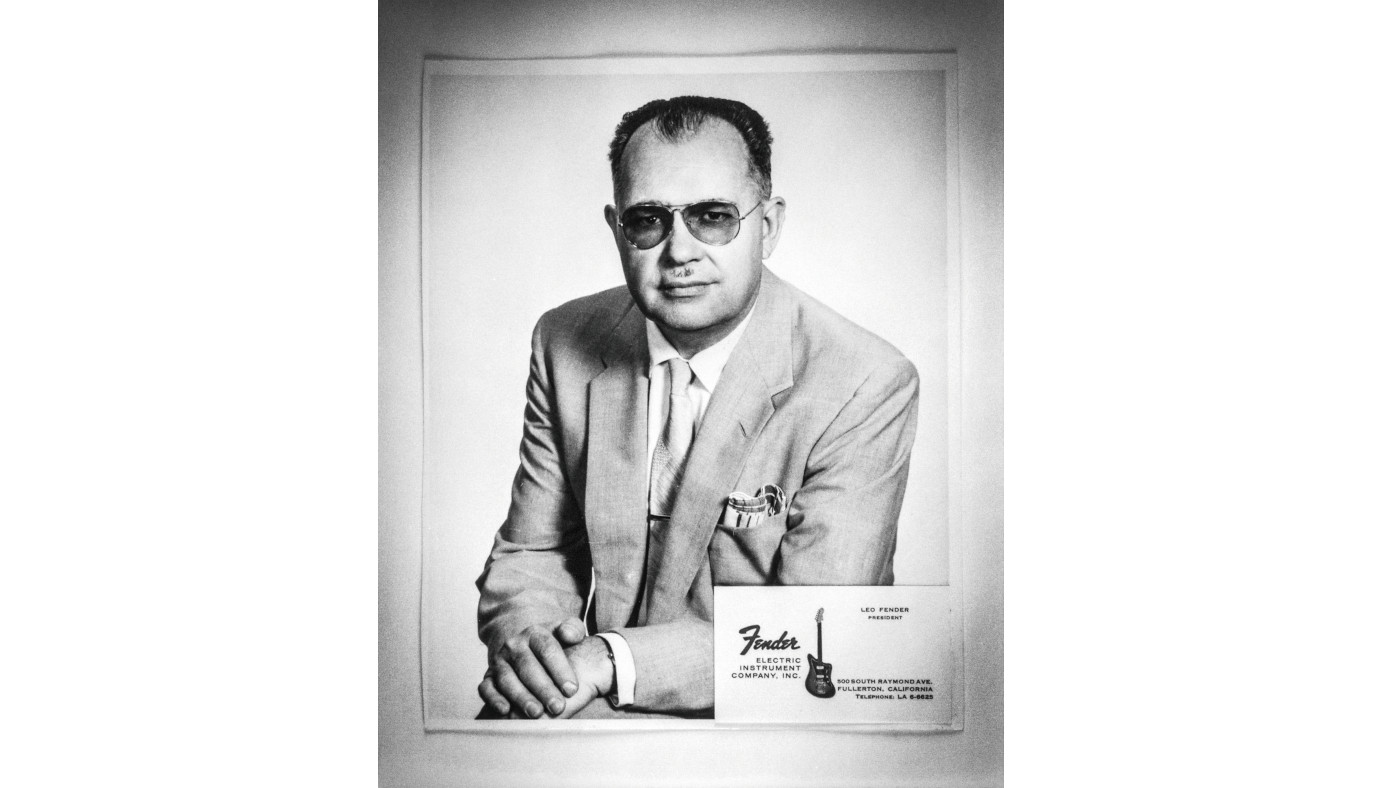
It says something of the haste with which Leo wished to bring the Esquire to market that some of its features were provisional and would change further before the guitar was available for sale in earnest.
“That guitar is an ash body, but it’s sandwiched together like some of the pine-body prototypes,” David says. “It’s probably one of the first - if not the very first - ash- body guitar. But it has a pancake body and, interestingly enough, it has a white pickguard made of fibreglass. I think they were experimenting with materials. This is before they made the decision to go with Bakelite on the guitar. They were probably weighing different things in the prototype stage. They simply laid out several layers of fibreglass matting and cut it to shape and attached it with five screws.
“There is no decal on the headstock, and the reason for that is if you look at the original catalogue photograph of the guitar, the word ‘Fender’ is actually an artist rendering in the photograph, so the Fender name is made larger and bolder in the photograph, but it’s not on the guitar. It’s also a no-truss-rod guitar.
"The pot dates to late 1948. The serial number is 0075, which is interesting because it was most likely made after the twin-Tele pickup prototype number nine that I have, the red one, which is a pine body and has a lap steel pickup in the neck cavity. So that’s an early piece in itself. I think he was just trying to get it right, you know? Where the pine body prototype is super, super light, it didn’t have the same sustain as the ash body.”
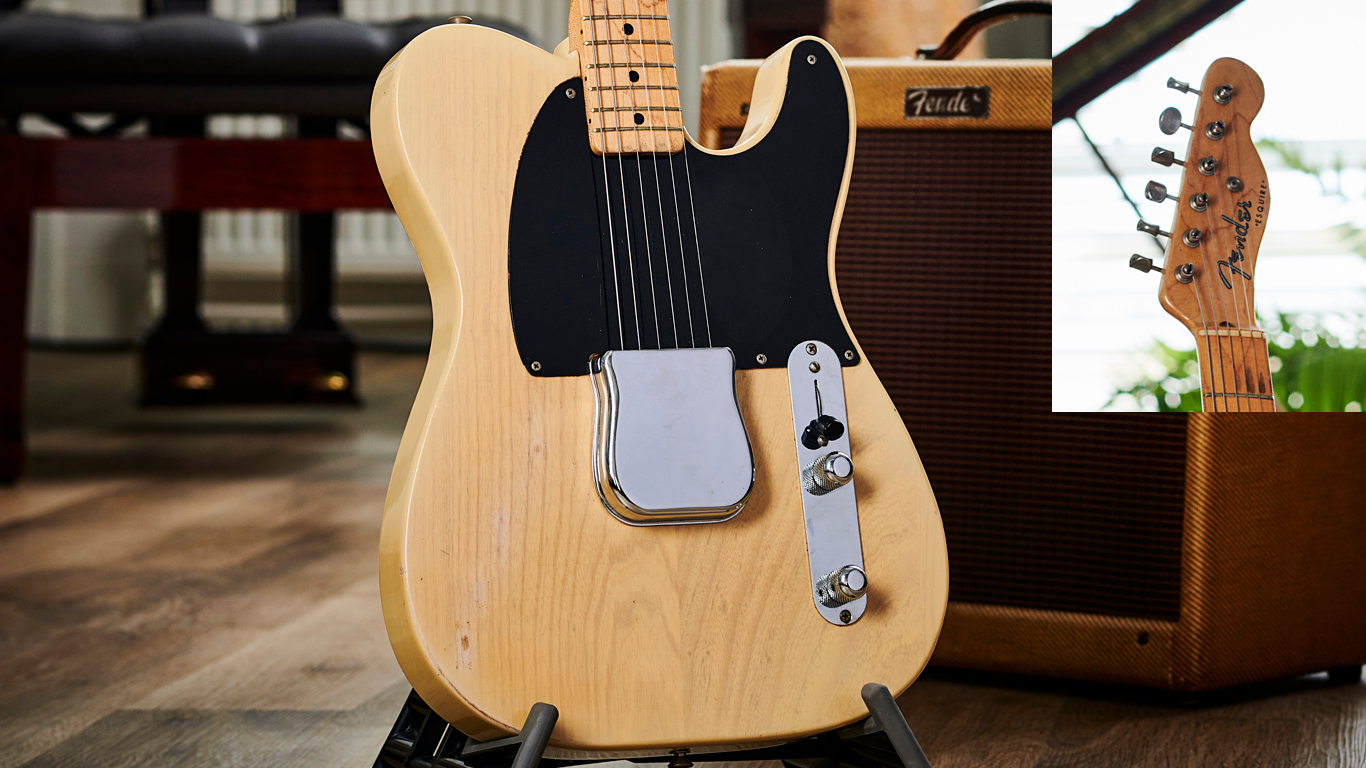
From Esquire to Broadcaster
David’s mention of twin-pickup prototypes ushers in the start of the modern Telecaster story. While the Esquire would be produced for many years in single-pickup format, it was clear early on that many musicians wanted more tonal variety than the standard Esquire’s brash bridge pickup could provide.
And so, ever keen to give musicians what they wanted, Leo soon began manufacturing twin-pickup versions of the Esquire. Mike Lewis of Fender’s Custom Shop takes up the story...
“Fender made single-pickup versions and double-pickup versions of Esquires. So there were some early 1950 ‘double’ Esquires that were, to all intents and purposes, what would later be called a Broadcaster and then a Telecaster, except it said ‘Esquire’ on the headstock at first.
"Possibly, when the single-pickup Esquire hit the market, people said, ‘Hey, this is great, but we want two pickups.’ So Leo makes them with two pickups as well. Then they’re out there trying to sell this guitar and somebody says, ‘Well, which is it? One pickup or two?’ Maybe it got confusing.
It’s remarkable how many features of the twin-pickup Broadcaster model of 1950 have carried through to present-day Teles
So they discontinued the ‘double’ Esquire and reintroduced it as a twin-pickup guitar called the Broadcaster. In fact, the double Esquire actually pre-dates the Broadcaster.” It was a lightning-fast development, but because it was guided by extensive developmental feedback from musicians, it’s remarkable how many features of the twin-pickup Broadcaster model of 1950 have carried through to present-day Teles.
“It took years for Gibson to get the Les Paul right,” says David Davidson of the Songbirds Guitar Museum, “but Leo Fender basically modelled himself after Henry Ford. Whatever the prototype is, the [production] guitar is going to be really close to that prototype. Leo’s research proved to be correct.”
Nonetheless, Mike Lewis of Fender’s Custom Shop says that the details of the early Broadcasters wandered around a little as Fender strove to settle on a definitive spec, yielding some early quirks that are still being rediscovered - and enjoyed - today.
“Some of those early, early Blackguards have a 71⁄4- to 91⁄2-inch radius: what I call a ‘vintage compound radius’. It either got that way over the years of being refretted, or maybe they didn’t have the right tooling and jigs to begin with and it was done by hand, you know? The early pickups also had larger diameter magnets in many cases. For example, the bridge pickup in the early guitars sometimes had a .195 diameter magnet as opposed to a .187. The Double Esquire [reissue] in our Vintage Custom series is really that: it has a 71⁄4- to 91⁄2-inch radius and those pickups with the larger magnets and the wiring. It’s really cool.”
The final stage in the development of the Esquire prototype into the Telecaster proper is well documented but bears repetition here. Perhaps nettled by the success of Fender’s all-new solidbody, Gretsch lodged a complaint about the name Broadcaster, on the basis that it sold a drum kit named the Broadkaster.
The chance of confusing the two products might seem remote, but as a fledgling company, Fender elected to avoid any possible legal entanglements by taking the Broadcaster decal off the headstocks of its production guitars for a period during 1951.
Guitars made during this interregnum are today dubbed ‘Nocasters’ due to the absence of a formal model name. Finally, around August 1951, Fender renamed its twin-pickup single-cut the Telecaster - and a legend was born.
Jamie Dickson is Editor-in-Chief of Guitarist magazine, Britain's best-selling and longest-running monthly for guitar players. He started his career at the Daily Telegraph in London, where his first assignment was interviewing blue-eyed soul legend Robert Palmer, going on to become a full-time author on music, writing for benchmark references such as 1001 Albums You Must Hear Before You Die and Dorling Kindersley's How To Play Guitar Step By Step. He joined Guitarist in 2011 and since then it has been his privilege to interview everyone from B.B. King to St. Vincent for Guitarist's readers, while sharing insights into scores of historic guitars, from Rory Gallagher's '61 Strat to the first Martin D-28 ever made.
“The humbuckers give it so much power and such a wide variety of tones while the destruct button really sets it apart from just about any other Tele”: Fender unveils the Mike Campbell “Red Dog” Telecaster
“This is a beautiful, well-executed Les Paul, and that’s the sort of guitar you tend to hold onto for life. That’s as sound an investment as there is”: Gibson Les Paul Standard ‘50s Double Trouble review




